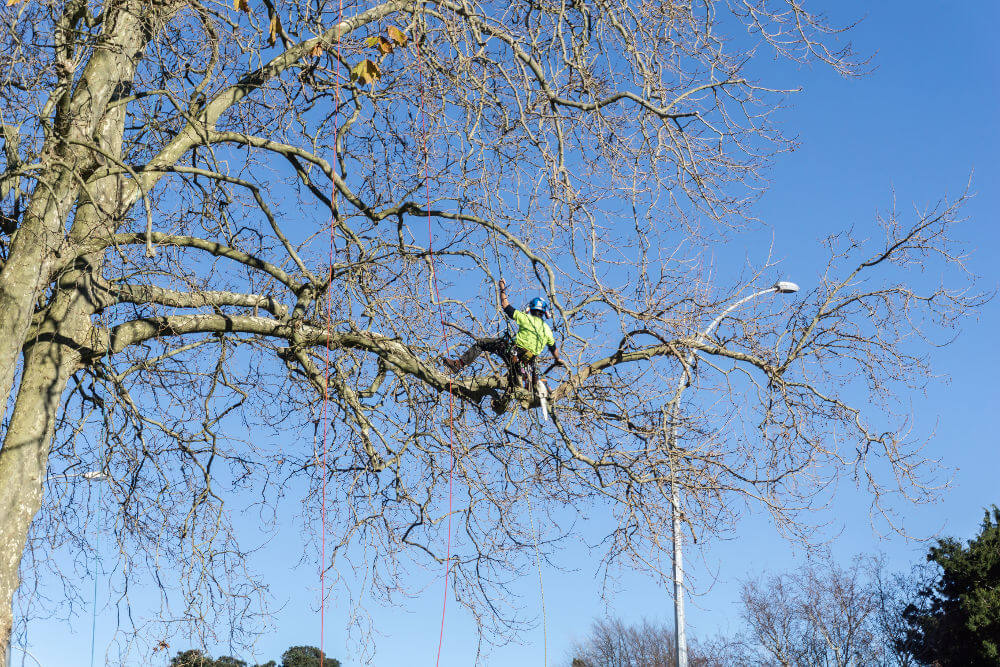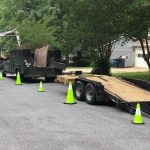The Impact of Storms on Trees
Storms can leave a devastating impact on trees, turning them from beautiful landscape features into potential hazards that can cause property damage or personal injury. Whether it’s a summer thunderstorm or a fierce hurricane, the high winds, heavy rains, and lightning associated with these events can take a toll on even the healthiest trees. This article provides essential information on storm damage prevention and cleanup, helping you understand how to protect your trees before a storm and what steps to take if they are damaged.
Understanding the Risks of Storm Damage
Storms can come in many forms, including thunderstorms, hurricanes, and tornadoes. These natural events can be unpredictable, and their intensity varies. Even minor storms can wreak havoc on trees that are already vulnerable due to poor health, structural issues, or their location in a crowded landscape. Large branches or entire trees can fall, posing significant safety risks to people and property.
Storm Damage Prevention
Prevention is the best approach to minimize storm damage. Regular inspections by certified arborists are critical to identifying potential risks, such as diseased branches or weak trunks. Proper pruning and trimming are vital for reducing wind resistance and eliminating dead or weak branches that could break off during a storm. This ensures that the tree has a better chance of withstanding high winds and that falling debris is minimized.
Another method to reinforce trees against storms is through support systems like cabling and bracing. These techniques can help support vulnerable branches and trunks, providing them with additional stability during strong winds. In addition, choosing storm-resistant tree species and planting them with adequate spacing can prevent overcrowding, which often leads to trees competing for resources and becoming more susceptible to storm damage. Soil and root care is also crucial. Well-maintained soil and deep root watering can help strengthen trees, allowing them to better withstand the stress of a storm.
Preparing for an Impending Storm
When a storm is forecast, there are specific steps you can take to prepare your trees. A pre-storm inspection is crucial to identify immediate risks that need attention. Securing outdoor furniture, garden ornaments, and other loose items can prevent them from being blown into trees and causing further damage. Additionally, having an emergency response plan in place is essential. This plan should include a list of emergency contacts, such as certified arborists and utility companies, as well as safety protocols for your household.
Post-Storm Damage Assessment
After a storm, safety should be the primary concern. Assess tree damage from a safe distance to avoid potential hazards such as downed power lines or unstable branches. Look for signs of damage like split trunks, hanging branches, and uprooted trees. Even seemingly minor damage can weaken a tree, making it more prone to falling in the future. For significant damage, it’s essential to have a certified arborist conduct a professional assessment to determine the extent of the damage and the best course of action.
Cleanup and Recovery
Cleanup and recovery after a storm can be a daunting task, but it’s crucial for restoring safety and normalcy to your property. Begin by removing fallen branches and debris safely, keeping in mind that heavy branches may require specialized equipment or professional assistance. In some cases, pruning may be enough to address damaged trees. However, if the tree’s structural integrity has been compromised, removal might be necessary to prevent further damage or injury.
Once the immediate cleanup is complete, consider restoring your landscape through replanting and other restoration efforts. Select tree species suited for the local climate and resistant to storms to reduce future risks. If a tree has been removed, it may also be worth considering different planting locations to ensure adequate spacing and avoid future issues related to overcrowding.
Conclusion
In conclusion, proactive measures like regular inspections, pruning, and proper tree support can significantly reduce the risk of storm damage. Preparing for storms with an emergency response plan and assessing trees beforehand can also mitigate the impact. However, when damage does occur, safety should always come first. Certified arborists can provide expert assessments to guide you through the recovery process and ensure that your landscape returns to its former glory. Investing in the health and safety of your trees not only protects your property but also maintains the beauty and vitality of your surroundings for years to come.



